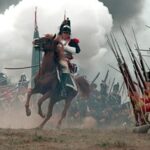LARP has no single point of origin, but was invented independently by groups in North America, Europe, and Australia. These groups shared experiences with genres of fiction or tabletop role-playing games and a desire to physically experience such environments. In addition to tabletop role-playing games, LARP has its roots in children’s imagination games, play fights, costume parties, role-playing simulations, comedy del arte, improvisational theater, psychodrama, military simulations, and historical reconstruction groups such as the Society for Creative Anachronism.
The earliest recorded LARP group is Dagorhir, which was founded in 1977 in the United States and specializes in fantasy battles. Shortly after the release of Logan’s Run in 1976, rudimentary role-playing games based on that film were launched at science-fiction conventions in the United States. In 1981, the International Fantasy Game Society (IFGS) was founded, with rules influenced by Dungeons & Dragons. IFGS was named after the fictional group in the 1981 novel Dream Park, which described futuristic LARPs. In 1982, the Society for Interactive Literature, the forerunner of the Real Time Role Players Association (LARPA), formed as the first recorded LARP theater group in the United States.
Treasure Trap, formed in 1982 at Peckforton Castle, was the first recorded LARP in the UK and influenced the fantasy LARPs that followed. The first recorded LARP in Australia was launched in 1983 using the sci-fi setting Traveler. In 1993, White Wolf Publishing released Mind’s Eye Theater, which still plays internationally and is probably the most commercially successful published LARP. The first German tournaments were in the early 1990s, where fantasy LARP grew especially fast, so that since 2001 there have been two major German tournaments every year, each with 3,000 to 7,000 players, and they attract players from all over Europe.
Today, LARP is a widespread international activity. Games with thousands of participants are run by commercial companies, and there is a small industry selling costumes, armor, and foam weapons designed primarily for LARP.
Most LARPs are designed for entertainment. Enjoyable aspects can include co-creating a story, trying to overcome challenges while pursuing character goals, and feeling immersed in a fictional setting. LARPs can also include other playful aspects, such as intellectual puzzles, and athletic aspects, such as wrestling with simulated weapons.
Some LARPs emphasize artistic considerations, such as dramatic interaction or complex subject matter. Avant-garde or art house events have a particularly experimental approach and high cultural aspirations and are sometimes held in the context of fine art such as festivals or art museums. The themes of avant-garde events often include politics, culture, religion, sexuality and the human condition. Such LARPs are common in the Nordic countries, but are also found elsewhere.
In addition to entertainment and artistic merit, LARP events can be intended for educational or political purposes. For example, the Danish high school Østerskov Efterskole uses LARPs for teaching in most of its classes. Language lessons can be taught by immersing students in a role-play scenario in which they are forced to improvise speech or writing in the language they are learning. Politically themed LARP activities can try to evoke or shape political thinking within a culture.
Because LARP involves a controlled artificial environment in which people interact, it has sometimes been used as a research tool to test theories in social fields such as economics or law. For example, LARP has been used to study the application of game theory to the development of criminal law.



